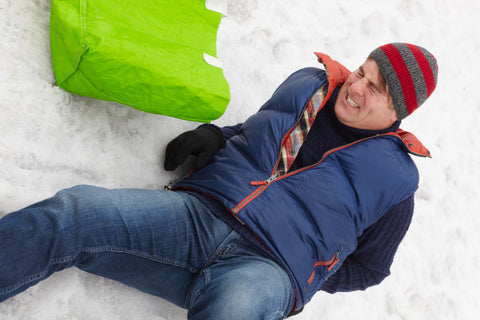on US orders over $100
on all US orders over $100

September 22nd is the beginning of fall, but it's also the commencement of an event that's just as important: Fall Prevention Awareness Week! If you haven't experienced mobility issues, it might be easy to overlook how distressing the prospect of falling might be. For older adults, it's a major cause of injury and stress, one that has a significant impact on independence and quality of life. Many older adults may not be aware of the many fall prevention programs available to help reduce their risk of falling.
Perhaps the least acknowledged impact of falls is the diminished quality of life that they can cause even in those who haven't had a fall injury. Older adults, fearing the possibility of falling, may limit activities and social events. This can lead to depression, social isolation, and physical decline, and can actually be a factor increasing the chances of falling. Fall prevention programs often highlight this little-known concern and create coping strategies for older adults.

Home may feel like the safest place in the world, but reduced activity in older adults means they're more likely to be at home, which makes it the likeliest place to suffer a fall. Fortunately there are plenty of changes anyone can make to their home environment to make it safer and more supportive.
Safeguarding Your Home
Medication
Many older adults take medications for chronic health conditions, but sometimes these can have side effects that increase the risk of falling. Unfortunately, many of these medications are for conditions that may affect older adults: heart conditions, blood pressure, dementia, arthritis, bladder control, blood clots, and even colds, flus, and allergies.
Some side effects to watch out for:
Always be aware of the side effects of your prescriptions, and tell your doctor if you're experiencing any adverse effects from a medication.
Pets
We all love our pets, but having animals around can be a hazard -- about 86,000 fall injuries a year involve dogs and cats. Our pets love us, but aren't aware when they might create a danger of falling. Here are some tips to make home safe for your pets and yourself:

It's impossible to fully safeguard the world outside of your home from falling hazards. In public, remember three important factors to your safety: visibility, sturdiness, and situation.
Visibility:
Sturdiness:
Situation:
Assistive devices can help support someone who feels unsteady while walking. They include single point canes, quad canes (which have four feet at the base), and walkers. With so many options, and with every adult's living situation and physical condition being different, it's important to speak with a doctor, occupational therapist, or physical therapist about the right device for you. An assistive device should be specific to an individual's needs and a comfortable size for them.
Benefits of an Assistive Device:

Whether an older adult is in need of an assistive device or not, they can benefit from evidence-based falls prevention programs designed to improve balance, strengthen muscles, and address fear of falling. Programs approved by the National Council on Aging, such as A Matter of Balance, address and reduce falling through multiple approaches, including:
Programs such as these can be group-oriented or individual, with some specialized programs centered on visiting infirm adults at home. Some programs focus on those who have previously suffered falls or who have physical ailments such as arthritis and joint pain that may increase the odds of falling. Group-oriented programs are often participatory in nature in order to encourage socialization as a response to the isolating effects induced by a fear of falling. Exercise programs may include elements such as cardiovascular workouts, stretching, strength training, and tai chi.
If you're an older adult, regardless of your level of mobility or physical condition, you should speak to your doctor about assessing your risk of falls. And if you're nervous about the potential for falling, don't be afraid to seek support! Whether it's from friends, family, or medical professionals, discussing your fear of falling and making a plan for prevention will help ensure you stay healthy, active, and independent.
Comments
Leave a comment